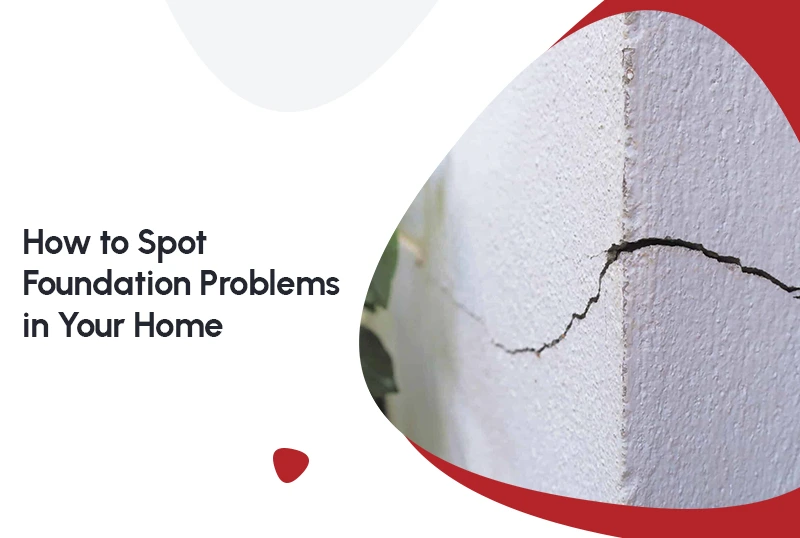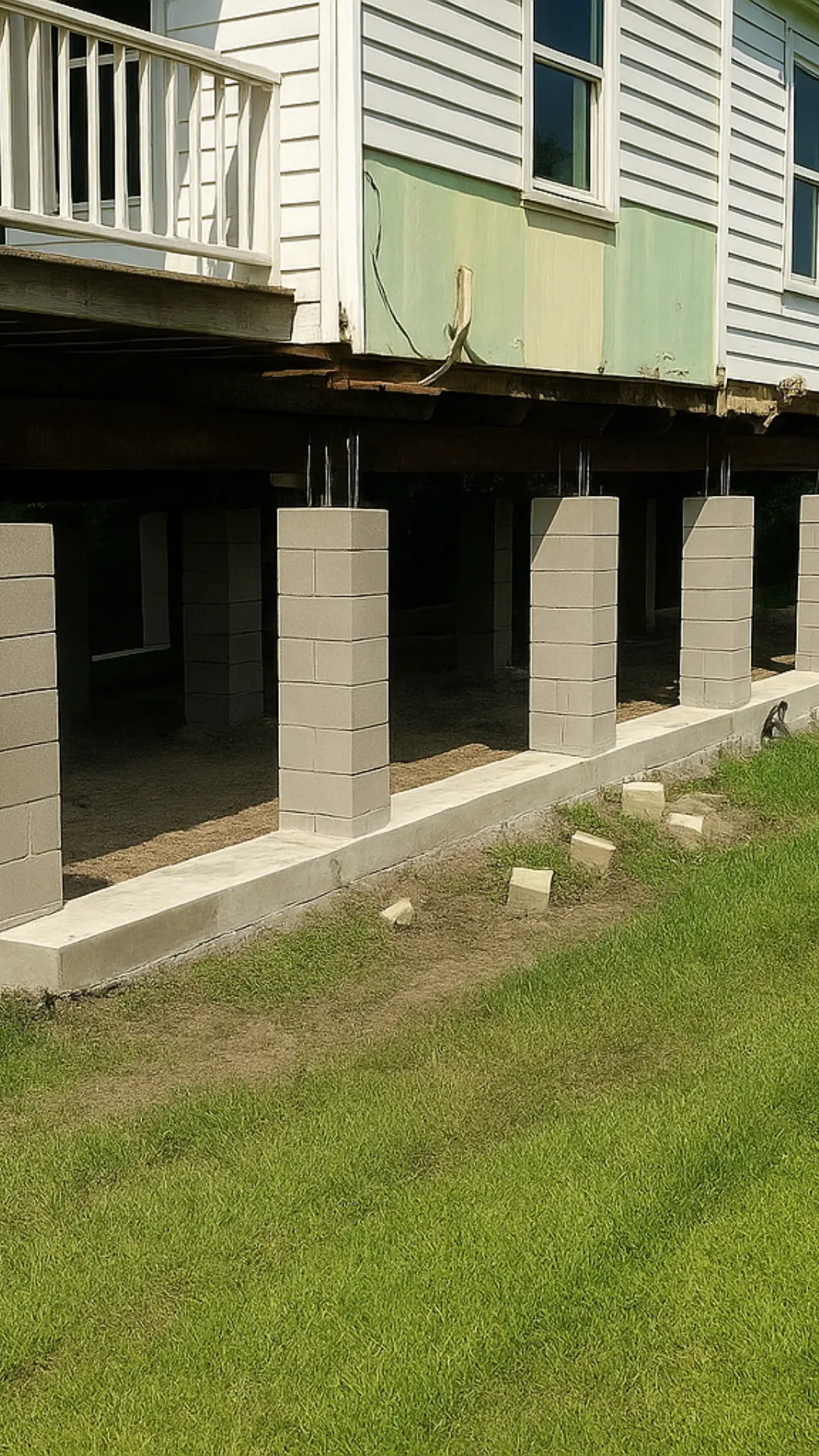Early detection of foundation problems is crucial for preserving a home’s safety, comfort, and value. Identifying subtle shifts like uneven floors, hairline cracks in walls, or doors that suddenly stick allows homeowners to address issues before they escalate. Consistent monitoring of these warning signs can save tens of thousands of dollars in repair costs. When minor settling becomes apparent, a specialist in House Leveling can restore stability and prevent further movement.
Understanding Your Foundation
Every home rests on a support system designed to bear immense weight. Over time, soil movement, moisture changes, and structural stress can challenge that support. An intact foundation distributes loads evenly; once it shifts, stress concentrates in isolated areas, leading to visible distress. Key components include:
- Footings and Slab: Concrete elements that spread structural loads.
- Stem Walls and Piers: Vertical supports that connect the slab to grade beams or piles.
- Drainage Systems: Gutters, downspouts, and grading that channel water away from the base.
When most homeowners think about foundation problems, they imagine large cracks or significant settling. In reality, damage often begins with tiny indicators small cracks in drywall, slight gaps where baseboards meet flooring, or mild sticking of windows. Recognizing these early signs can trigger a prompt inspection and targeted repairs.
Top Warning Signs
Visible indicators provide the first clues that the foundation has experienced movement. Inspect regularly for:
- Wall and Ceiling Cracks
- Vertical Cracks: Often appear above windows or doors and typically indicate slight settling.
- Stair-Step Cracks: Zigzag cracks in brick or block walls suggest lateral soil pressure.
- Vertical Cracks: Often appear above windows or doors and typically indicate slight settling.
- Uneven or Sloping Floors
- Walk through each room slowly. If you feel a tilt or bounce, the slab may have shifted.
- Use a level or a marble test to detect subtle slopes.
- Walk through each room slowly. If you feel a tilt or bounce, the slab may have shifted.
- Doors and Windows That Stick
- If frames bind when opening or closing, the surrounding structure may have shifted out of square.
- Note changes during seasonal humidity excessive sticking often correlates with foundation movement.
- If frames bind when opening or closing, the surrounding structure may have shifted out of square.
- Gaps Around Fixtures
- Look for spaces between window frames and walls, or between baseboards and floors.
- Small gaps can indicate that one section has dropped relative to another.
- Look for spaces between window frames and walls, or between baseboards and floors.
- Moisture Intrusion
- Basements that suddenly leak after rain may have developed cracks or voids.
- Poor drainage can accelerate soil erosion, requiring Concrete Slab Foundation Repair to restore a watertight seal.
- Basements that suddenly leak after rain may have developed cracks or voids.
These foundation problems manifest most often in basements, crawlspaces, and ground-level rooms. Regularly surveying these areas especially after extreme weather helps catch shifts before they undermine structural integrity.
Want more information? Read here: How Much Does Foundation Crack Repair Cost in 2025?
Common Causes
Understanding what drives foundation movement allows homeowners to mitigate risks proactively. Foundation problems typically arise from:
- Soil Expansion and Contraction: Clay-rich soils swell when wet and shrink when dry, creating an up-and-down cycle that stresses slabs and footings.
- Poor Drainage and Grading: Water pooling near walls erodes supporting soil, leading to voids beneath the foundation.
- Tree Roots and Vegetation: Mature roots extract moisture, creating localized soil deficits that cause settling.
- Construction Deficiencies: Inadequate compaction of backfill, improper reinforcement, or low-quality concrete can accelerate structural distress.
- Hydrostatic Pressure: Groundwater buildup against basement walls pushes inward, causing bowing and cracks.
By recognizing these triggers, homeowners can implement corrective measures like improved drainage, targeted irrigation, or structural reinforcement before minor shifts evolve into major failures.
DIY vs. Professional Inspection
While simple cosmetic cracks can be sealed with epoxy kits, diagnosing serious foundation problems demands professional expertise. Homeowners can perform a preliminary assessment:
- Visual Inspection: Note crack width, length, and orientation.
- Level Test: A long level or a laser level reveals floor slopes.
- Moisture Check: Use a moisture meter to detect dampness in walls and floors.
However, a certified foundation engineer or contractor brings specialized tools and knowledge:
- Laser Levels and Transits: Provide precise elevation readings across multiple points.
- Soil Probing: Identifies pockets of loose or eroded soil beneath footings.
- Load-Bearing Analysis: Ensures that repair methods match the home’s weight distribution needs.
If preliminary findings raise concern particularly horizontal cracks or walls bowing inward schedule a professional inspection promptly. Early intervention minimizes repair complexity and expense.
Preventative Maintenance
Consistent upkeep can reduce the likelihood of costly foundation shifts. Implement the following strategies to guard against future foundation problems:
- Maintain Proper Grading: Ensure ground slopes away from the foundation at a minimum of 5% (6 inches over 10 feet).
- Install and Clean Gutters: Clear debris to prevent overflow and soil saturation at the base of walls.
- Regulate Soil Moisture: During droughts, install drip irrigation or soaker hoses around the perimeter to keep soil moisture consistent.
- Monitor Vegetation: Keep large trees at least 10 feet from the foundation. Prune roots or install root barriers if necessary.
- Inspect Annually: Check for new cracks, shifts in door frames, and water pooling near walls after heavy rainfall.
Regular maintenance helps prevent foundation problems before they start. Small adjustments now can save substantial sums later.
Conclusion
Spotting foundation issues early preserves your home’s structural integrity and prevents minor cracks from becoming catastrophic damage. If warning signs appear uneven floors, visible cracks, or moisture intrusion take action without delay. For minor settling, consider professional Concrete Leveling to restore a level base. With proactive inspection, timely maintenance, and targeted repairs, homeowners can safeguard their investment and enjoy a stable, secure living environment for decades to come.
FAQs (Frequently Asked Questions)
- What is the most common sign of a settling foundation?
Hairline cracks in drywall above doors or windows often indicate slight settling. - How much does it cost to repair minor foundation cracks?
Simple crack sealing can range from $300 to $800, depending on crack length and method. - Can I repair foundation problems myself?
Cosmetic cracks under 1/8 inch may be sealed with DIY kits, but structural issues require professional assessment. - How long do foundation repairs typically take?
Most residential projects such as slab leveling or pier installation take 1–3 days, depending on complexity. - Will my homeowner’s insurance cover foundation damage?
Standard policies rarely cover damage from soil movement or poor drainage. Check your policy for specific exclusions.







